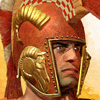HOME | DD
 ChrisHistoryartworks — Jason and the Golden Fleece
ChrisHistoryartworks — Jason and the Golden Fleece

#argo #argonauts #armor #campaign #goldenfleece #greece #helmet #hero #history #horns #jason #ram #shield #spear #spears #thessaly #war #warrior #zeus #ancient #ancientgreece #blacksea #bronzeage #greekmythology #illustration #ironage #mythology #mythologycharacter #mythologygreek #historyart
Published: 2021-05-15 20:16:26 +0000 UTC; Views: 7264; Favourites: 91; Downloads: 1
Redirect to original
Description
Commissioned cover art and armor research assigned to me in 2015 for the illustration of the children's book entitled "Jason-the golden fleece"(©Karakotsoglou publications).
A generation before the Trojan War, a Thessalian hero from Iolkos, Diomedes, undertook the sacred mission to seek in the Black Sea a sacred heirloom that would bring fertility to the land of Thessaly and stop the prolonged drought that threatened the land with drought and the people with starvation. According to legend, the heirloom was a golden-haired fleece of a sacred ram, that any king who owned it would be invincible in battle and his people would never experience hunger and deprivation because his land would always be fertile. Diomedes was the son of the previous king of Iolkos who was violently ousted from the throne by his brother Pelias and therefore the rightful heir to the throne. Pelias publicly promised the young Diomedes that he would hand over the throne to him peacefully if he managed to bring the Golden Fleece to Iolkos and stop the drought. Then the afflicted people of Iolkos named Diomedes "Jason" which means "healer", because if he acquired the Golden Fleece he would be able to bring rain and "heal" the country…Jason's campaign in the Black Sea became known in mythology as "Argonaut campaign" and is recorded by Apollonius of Rhodes…
Armor research: Because the Argonaut expedition actually refers to events that took place not only in the Late Bronze Age but also in the Greek Iron Age, a simple armament with a "heroic aura" was designed for the protagonist that could have been used in both periods. Its crested conical helmet is the Homeric "Corytha", an item used in Bronze and Iron age respectively. Here is decorated with real ram horns which are covered with forged copper sheets. The embossed ram head is also the symbol of its round shield. The ram is a sacred animal for both the king of the gods Zeus and Aries(Mars), the god of war. Shields with decorated bosses were actually used in Greece until the Classical antiquity. The two spears - javellins of the hero (custom of the heroic era) are decorated with gold rings following “heroic Homeric” style patterns. The body torso is protected by a bronze breastplate while its sword hangs from the back, a custom observed in the Late Bronze Age in Greece.
© Copyright 2015: Karakotsoglou publications - Illustration: Christos Giannopoulos
Related content
Comments: 2

👍: 0 ⏩: 1

👍: 0 ⏩: 0

















